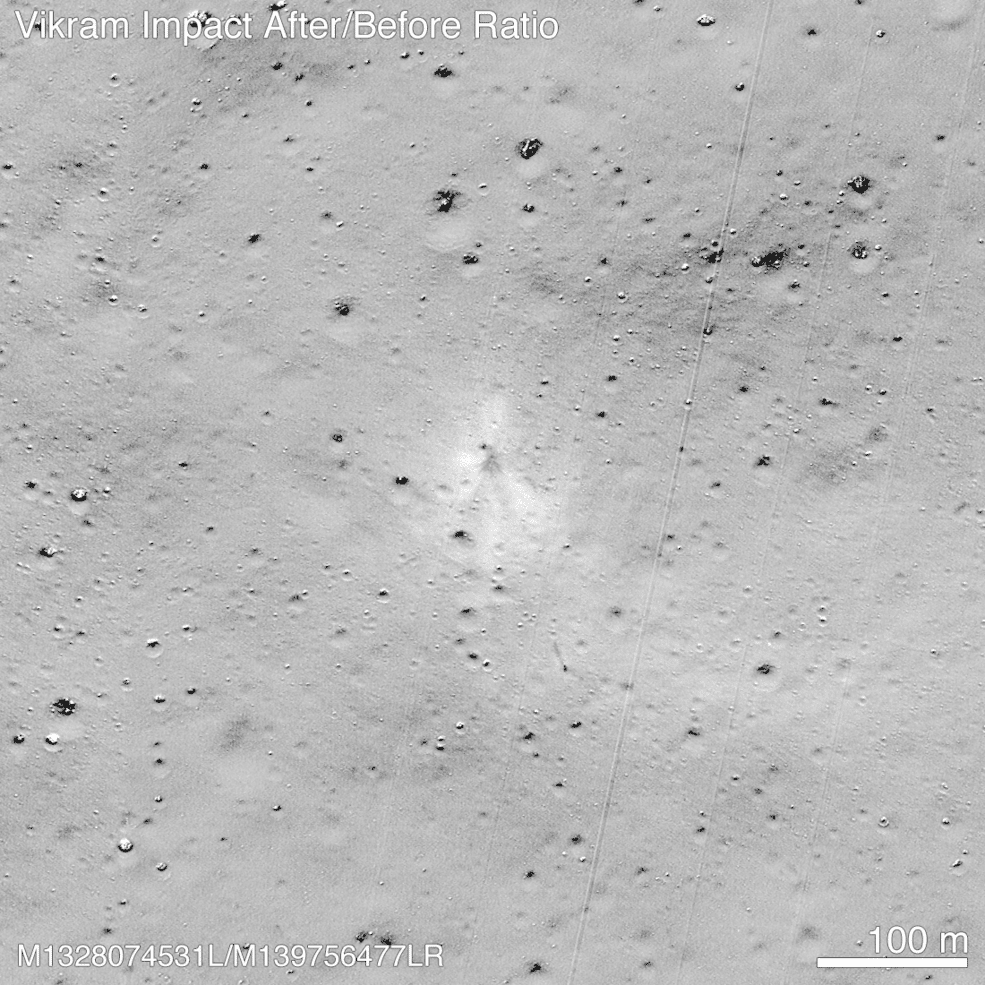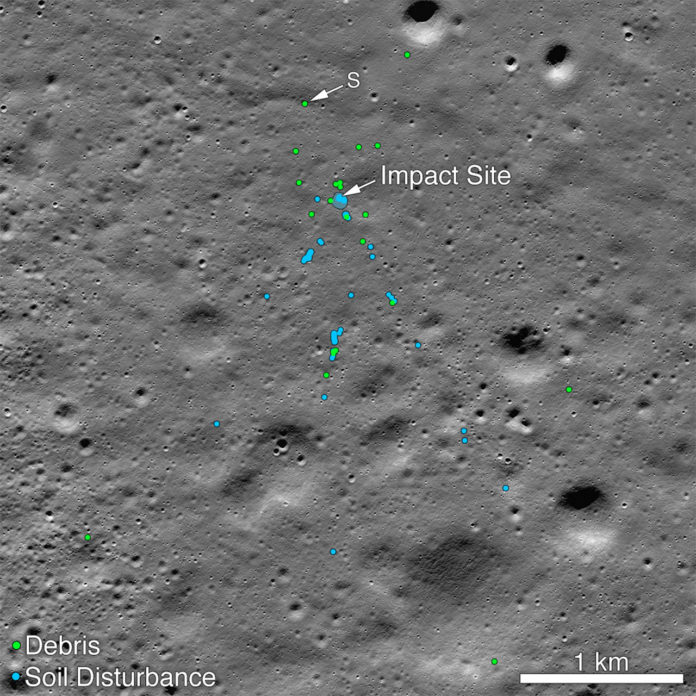Chandrayaan 2 lander was ready to land on Moon’s surface on September 07, 2019. But just minutes before the landing, the ISRO lost communication with Vikram, when it was 2.1km from the lunar surface.
On September 17, 2019, NASA‘s LRO made its first flyby on the landing site of the Vikram but was not able to spot the lander.

Shanmuga Subramanian, the Chennai-based engineer, contacted the LRO project with the identification of debris. After receiving this tip, the LROC team confirmed the identification by comparing before and after images. When the images for the first mosaic were acquired, the impact point was poorly illuminated and thus not easily identifiable.
Two subsequent image sequences were acquired on Oct. 14 and 15, and November 11. The LROC team scoured the surrounding area in these new mosaics and found the impact site (70.8810°S, 22.7840°E, 834 m elevation) and associated debris field. The November mosaic had the best pixel scale (0.7 meters) and lighting conditions (72° incidence angle).
The November mosaic shows best the impact crater, ray, and extensive debris field. The three largest pieces of debris are each about 2×2 pixels and cast a one-pixel shadow. The debris was located about 750 meters northwest of the main crash site.
